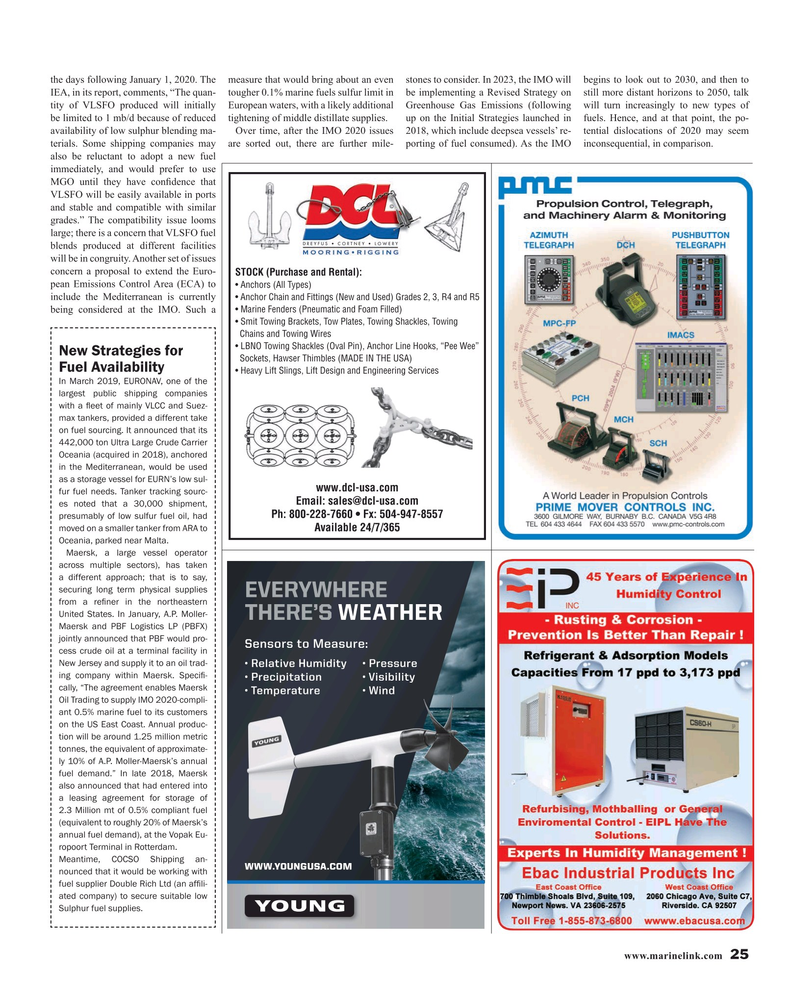
Page 25: of Maritime Reporter Magazine (June 2019)
80th Anniversary World Yearbook
Read this page in Pdf, Flash or Html5 edition of June 2019 Maritime Reporter Magazine
the days following January 1, 2020. The measure that would bring about an even stones to consider. In 2023, the IMO will begins to look out to 2030, and then to
IEA, in its report, comments, “The quan- tougher 0.1% marine fuels sulfur limit in be implementing a Revised Strategy on still more distant horizons to 2050, talk tity of VLSFO produced will initially European waters, with a likely additional Greenhouse Gas Emissions (following will turn increasingly to new types of be limited to 1 mb/d because of reduced tightening of middle distillate supplies. up on the Initial Strategies launched in fuels. Hence, and at that point, the po- availability of low sulphur blending ma- Over time, after the IMO 2020 issues 2018, which include deepsea vessels’ re- tential dislocations of 2020 may seem terials. Some shipping companies may are sorted out, there are further mile- porting of fuel consumed). As the IMO inconsequential, in comparison. also be reluctant to adopt a new fuel immediately, and would prefer to use
MGO until they have con? dence that
VLSFO will be easily available in ports and stable and compatible with similar grades.” The compatibility issue looms large; there is a concern that VLSFO fuel blends produced at different facilities will be in congruity. Another set of issues concern a proposal to extend the Euro-
STOCK (Purchase and Rental): pean Emissions Control Area (ECA) to s

 24
24

 26
26
